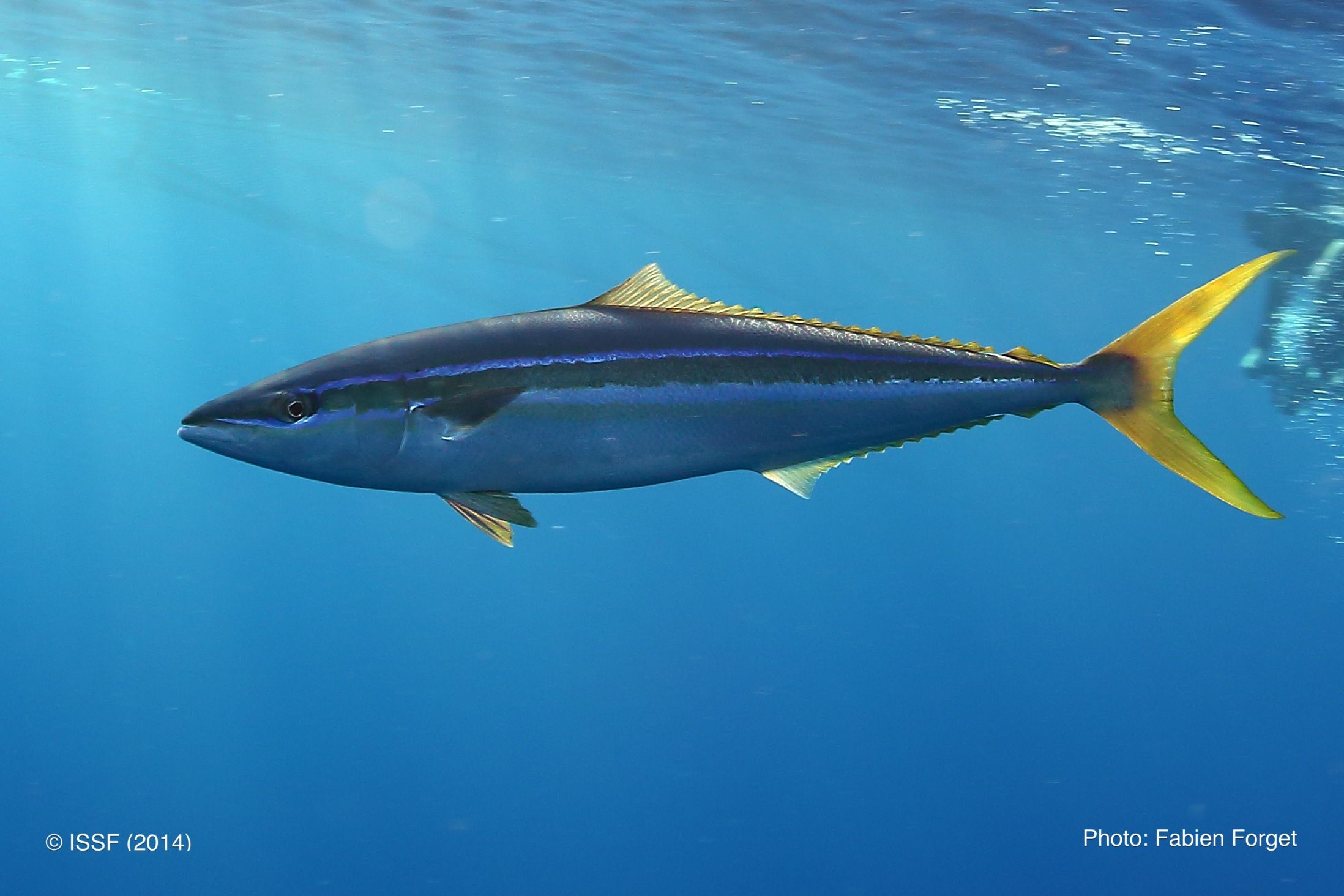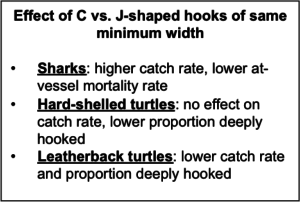Tuna RFMOs in 2018
Posted by Holly Koehler
Science-based approaches to sustainable tuna are only effective if they are implemented. That’s why ISSF advocates to tuna RFMOs and their member nations – both directly and through the efforts of ISSF participants and stakeholders – for policies and approaches that foster real, positive change for the long term sustainability of global tuna fisheries. The end of the year is an apt occasion to assess the impact of our efforts. What’s been accomplished in the world of tuna conservation and management? And what opportunities were missed in 2018 that set the course for 2019?
Top RFMO Wins in 2018
There were two developments at tuna RFMOs in 2018 that are especially exciting:
- A new requirement for the use of fish aggregating devices (FADs) designs that reduce entanglement in Pacific tuna fisheries; and
- The modernization of vessel monitoring systems requirements for Atlantic fisheries.
FADs are man-made floating objects specifically designed to attract and aggregate fish. FADs are widely used as a fishing gear due to the efficiency advantage they provide. But because FADs can be associated with negative ecosystem impacts, such as higher bycatch through entanglement of some species and beaching (when a FAD that was previously drifting at sea washes ashore and becomes grounded or entangled on a reef), better design and management of these devices is on ISSF’s list of top “asks” for all tuna RFMOs.
Just this month, the Western and Central Pacific Fisheries Commission (WCPFC) adopted a binding requirement for the use of lower-entangling FAD designs as of 1 January 2020 – making these designs mandatory in all four tuna RFMOs. This move will ensure consistent implementation of this gear design across the tuna fisheries of the wider Pacific Ocean, given the progress achieved by the Inter-American Tropical Tuna Commission (IATTC) on non-entangling FADs earlier this year. And it’s a collaborative success, achieved by scientists, RFMO decision-makers, NGOs, and the vessel community working together. We’ll be working to promote more of the same in the New Year: Diverse stakeholders cooperating to better protect marine life.
Combating illegal, unreported, and unregulated (IUU) fishing activities across tuna fisheries is another global and critical mission for ISSF. Important components of that fight — from strengthening vessel monitoring systems (VMS) to better managing at-sea transshipment — continue as priorities in ISSF RFMO position statements. We were pleased that ICCAT acted to modernize its vessel monitoring systems requirement this year, specifically, so that the collection and transmission of data occurs at least every hour for purse seine vessels and at least every two hours for other vessels (the previous measure required a four-hour frequency). This has been one of ISSF’s long-standing best-practice “asks”.
More Progress: FADs and Fighting IUU
Here are the other wins across the world’s tuna RFMOS we’re applauding as progress toward sustainable tuna fisheries.
Biodegradable FADs
- IOTC adopted a proposal for a biodegradable FAD experiment to address marine debris and entanglement in marine habitats from FADs. ISSF is a partner in this EU-backed-and-funded project and has already collaborated in the Indian Ocean with coastal states, NGOs and purse seine fleets on similar research. ISSF is also partner in a FAO Common Oceans ABNJ Project to trial at-sea biodegradable FADs in the Atlantic Ocean, which will begin in 2019.
Stronger Weapons in the Fight against IUU
- IOTC and ICCAT intensified their fight against IUU activities by enhancing its IUU vessel listing processes. This move enables the cross-listing of vessels included on the IUU vessel lists of other RFMOs — an improvement we have been advocating for in the RFMOs as a best practice. In particular, ICCAT now will allow the cross listing of vessels listed by non-tuna RFMOs (like carrier vessels), and it removed the measure’s previous limitation to fishing vessels of 12m or greater.
- IOTC and WCPFC made strides in toughening their regulation of at-sea transshipment. The IOTC defined “large-scale tunalongline vessel,” a long-standing ISSF ask, and the WCPFC agreed to establish a working group in 2019 to improve and strengthen its transshipment measure.
- IATTC and WCPFC amended their authorized vessel register measures to implement the new International Maritime Organization(IMO) regulations requiring IMO numbers for all fishing vessels greater than 12m. IMO numbers are critical for tracking vessels, similar to vehicle identification numbers (VINs) for cars, which follow the life of the vessel, enabling traceability.
Biggest RFMO Misses: FAD Data, Tuna Management, Observer Coverage
While I’m applauding these gains for sustainable fisheries, there were some stalemates at tuna RFMOs this year that were especially disappointing, specifically the lack of progress on:
- Enhancing FAD data requirements in eastern Pacific and Indian Ocean tuna fisheries, and addressing the poor reporting of required FAD data overall;
- Adopting science-based conservation measures for Atlantic Ocean tropical tunas; and
- Observer coverage in longline and pure seine fisheries.
Science-based FAD management measures require accurate and timely data. But the continued lack of implementation of existing rules for FAD data, as well as the rejection of additional data sources, is undermining progress across RFMOs.
In the eastern Pacific Ocean, for example, despite growth in the use of FADs there and the resulting FAD-data-reporting requirements, only 47% of the required data has been received by IATTC. Further, a mere 3 out of 10 countries had sent 100% of the data required, with some countries reporting none at all. Similarly, in the Atlantic, only a handful of ICCAT fishing nations are complying with RFMO requirements for FAD data submission, seriously hindering stock and broader fisheries analyses. ICCAT has been unresponsive to ISSF’s appeals to improve the implementation of this critical reporting requirement.
The situation is the same in the Indian Ocean: Not only does FAD data collection and reporting need to be improved across all fleets, the Indian Ocean Tuna Commission (IOTC) also needs to ensure that it closes the loophole for the use of non-entangling FADs by setting a deadline for the mandatory use of these designs.
Another disappointment occurred In the Atlantic Ocean this year, where ISSF was especially concerned with measures for bigeye and yellowfin tuna stocks. That’s because the region’s bigeye stock is overfished and subject to overfishing, and yellowfin tuna may be experiencing overfishing as well. We urged the adoption of one or more measures as potential solutions.
But ICCAT failed to reach an agreement on stronger tropical tuna conservation measures. With no progress on tuna management, overfishing of tuna stocks will continue. The stocks will likely be in worse shape next year, and the negotiation of appropriate conservation measures will become even more difficult.
Finally, the lack of improvements for observer coverage was disappointing. Comprehensive observer coverage is a critical component of monitoring and management for sustainable tropical tuna fisheries. Although we were encouraged by IATTC’s adoption of a measure to ensure safety at sea for human observers, who face difficult and sometimes dangerous work, it was not a progressive year in this area:
- WCPFC and IATTC require 100% observer coverage of large-scale purse seine vessels. Yet ICCAT and the IOTC persist in requiring only a minimum of 5% coverage for various gear types, including purse seine. ICCAT does require 100% observer coverage for all vessels 20m length overall or greater in the tropical tuna fishery, but only during a specific FAD time/area closure.
- No RFMO increased the minimum requirement for longline fisheries, which require a mere 5% minimum coverage, and which scientists say is inadequate and is not even being met in many cases.
It is imperative that observer coverage of longline vessels globally, and purse seine vessels in the Atlantic and Indian Oceans, is increased to provide effective monitoring of general fishing and important rare interaction events.
Priorities for 2019
In addition to seeking accelerated progress on the missteps noted above, in 2019 ISSF and our partners will continue to urge RFMOs to:
- Adopt species-specific harvest strategies, including harvest control rules, and progress management strategy evaluation(MSE) work;
- Increase observer coverage for large scale purse seiners, where it is not already 100%, and longliners and developelectronic monitoring (EM) and reporting standards that will make 100% observer coverage in both possible;
- Strengthen conservation measures for bycatch including sea turtles, sharks and For example, we’ll again be seeking that sharks be landed with fins-naturally attached and prohibitions on mobula and manta ray retention and intentional setting;
- Strengthen at-sea transshipment regulations and further reform of VMS and other MCS tools in all the RFMOs, in line withbest practices; and
- Ensure the sustainable management of neritic tuna species.
There was certainly progress and a reason to toast to 2018 this New Year. And we remain focused on taking steps forward, not backward, when it comes to the long-term sustainable management of the world’s tuna fisheries and their associated ecosystems.
ISSF will continue to serve as a global bridge among all stakeholders in the year to come. And there is much work to be done in 2019 to ensure that we can celebrate a year from now.










